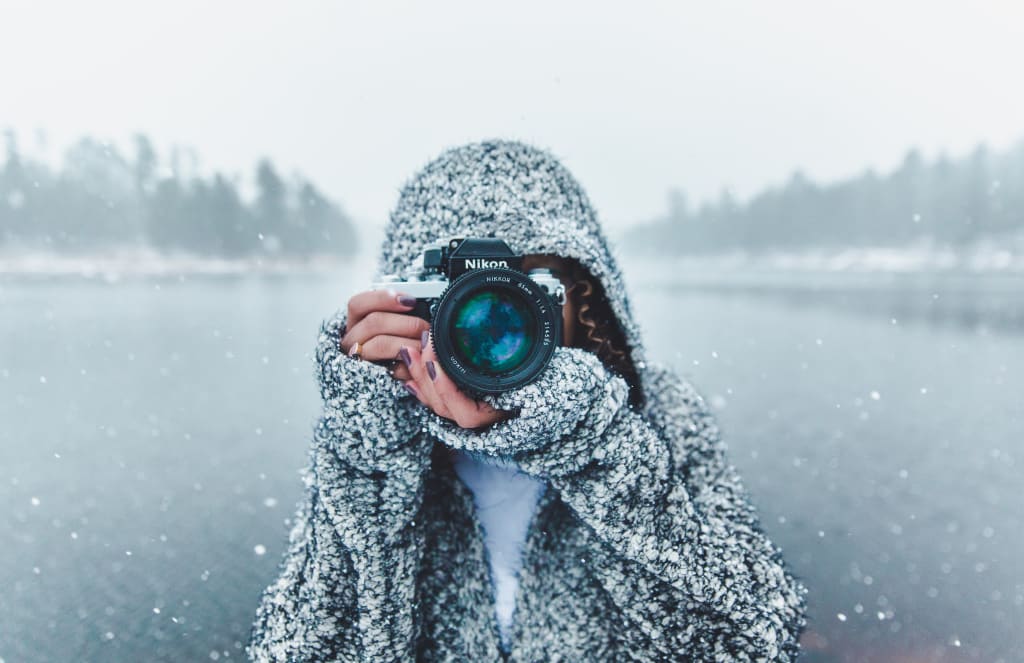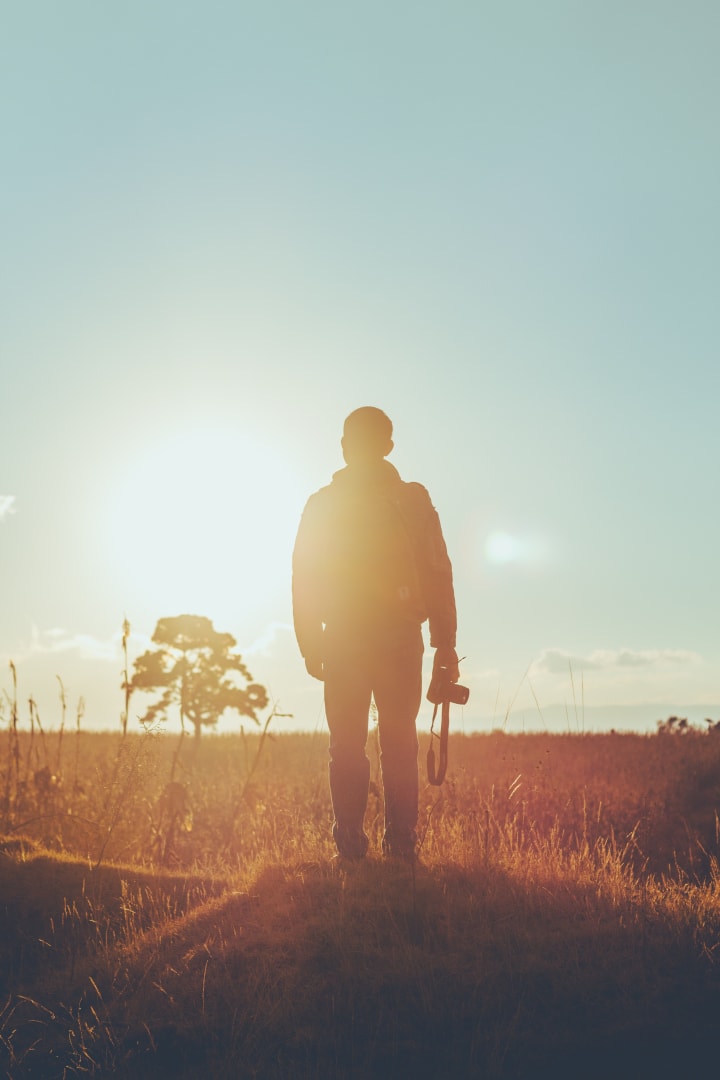12 Shooting Tips for New Photographers
Whether you need general advice or more details on intimidating camera settings, you've come to the right place. Shooting tips for new photographers will take your game to the next level.

Finding good shooting tips for new photographers can be tough. A lot of guides go too basic and others gear more toward professionals. I'm pretty new to the world of photography, but as a beginner, I've made some discoveries that I'd like to share with my fellow developing photographers out there. Things like ISO, aperture, and shutter speed sound complicated at first, but they are vital features to learn about when working with whatever camera it is that you have.
I'm pursuing photography as a hobby, without any academic backbone to my learning. This is quite unusual for me, since I'm usually the type who loves to talk about what I learned in a class that I took pertaining to whatever topic I'm going on about. However, with photography, there's a lot you can learn online and through self-exploration.
Composition and lighting are always key.
Having adequate light is a constant battle for quality photography. As a beginner, it's easy to underestimate just how important lighting is to taking great photos. Composition isn't just a vague word, it's something designers think about every time they make a logo or a flyer.
The same idea applies to photography. If you have a very specific subject, composition and light will make or break your shot, regardless of if you're using a point-and-shoot or if you have a proper DSLR. If you're wondering why your photoshoots don't look good, composition issues could be one of the big problems.
To learn the different setting and modes that will impact your photos is an important first step. You've got to get off of auto mode and start exploring what your camera can really do. Using aperture priority mode is particularly important when you want to learn to adjust and manipulate depth of field in your photos. It lets you focus on composition and how the depth of field impacts your composition.
With aperture priority mode, you can worry a little bit less about getting the right settings for proper exposure. Your camera has your back on that. When you're early in your journey as a photographer, mastering one skill at a time makes learning easier. There are a lot of photography tips out there that help, but you've also got to have a solid foundation of basic camera knowledge.
Practice photography all the time, even on every day objects.
Your desk or kitchen might not inspire you to break out your camera, but photography requires practice and experimenting with different settings. Test out different settings and modes by taking pictures of every day objects.
If you need a little more motivation for taking pictures of mundane subjects, you could try uploading your best shots to a stock photo website and see if you can get a couple dollars of passive income rolling in from month to month. This way, your practice shots of your coffee cups and salt shakers might just come in handy for someone, and earn a little money for you, too.
When they say you should always have tape with you, they're not lying. Beyond being handy for marking things and for keeping track of your equipment when you're with other photographers, gaffer tape has a myriad of uses. It's both a tool for getting things done, and a toy. You can use it to cap or shade a lens, mark which bag is yours, flag a light, hold back a curtain, and so much more. It's small, inexpensive, and it's just a smart thing to slip into your camera bag.
You don't need to buy a ton of expensive equipment when you're an entry-level photographer, but this is a small investment to make.
Messing with your ISO setting sounds complicated, but experiment with it.
Photographers learn early on that automatic mode is really just for when you let your friend take a few test shots with your camera. ISO is one of the most absolutely important settings on your camera. On a DSLR, ISO measures the sensitivity of the image sensor. Again, ISO, aperture, and shutter are speed are the three basic photography settings every beginner photographer must know.
Typically, 100 ISO is the most common setting for the minimum amount of grain and noise in your photo for when you're in a typical situation with good lighting conditions. However, if you purposefully want to have a little more grain in a low light situation, you can bump your ISO up from 100 to 400 or higher. If it's dark, increasing the ISO will let you shoot with a faster shutter speed, which can help you capture the subject clearly. This particularly comes in handy if your subject is moving.
Learn to hold a camera properly.

It sounds easy, but there are some very particular stances you'd learn in photography classes that will help you take better photos.
You may feel like you look a little bit silly, but reading a helpful guide on how to hold a camera and take sharper photos will do you wonders. If you're worried that you'll look strange in a crowd doing some of these poses, don't worry. There'll be at least one photography major out there who sees you and nods approvingly that you're using proper form.
I've got a 500GB SSD and a 1TB traditional hard drive in my desktop computer, so that gives me a good amount of storage room. However, it's wise to have your photos saved in more than one place. We never want to so much as imagine our computers experiencing a catastrophic memory failure, but it can happen.
Western Digital—WD for short—has been making hard drives for longer than many of us have been alive. If you open up your computer, regardless of what brand it is, the hard drive inside was probably made by WD. This particular external hard drive is 2TB, which is more than enough for even the most massive library of photography. Having a good shooting session is a lot of work, so back up your photos diligently.
Bring your camera with you everywhere.
You don't always have to bring your tripod and be ready for a full on photoshoot, but you never know when you're going to stumble upon something beautiful or aesthetically pleasing that just begs for you to take a photo of it. After all, even digital cameras and DSLRs aren't that big anymore.
When I was researching the advantages of a mirrorless camera and what the best cameras for beginners are, I made up my mind to get a Lumix. The camera itself is pretty light and versatile, which makes it perfect for keeping it in my car or in my backpack.
Be experimental and try photographing different subjects and settings.
While composition and light are always important, this doesn't mean that you should just pack your camera up when you're in a low light situation. Experiment with your camera settings and see if you can still get some great shots of the moon or of a lake at night. It'll be tricky and you'll need to be very still, but you always want to be experimental and not get stuck in a photographic rut.
It's incredibly easy to make your camera shake. You probably don't even realize that your hands are unsteady—they look steady enough to you, right? Wrong. Using a tripod and either a timer or a remote camera shutter is vital to getting the perfect clarity you're looking for.
Let's talk about white balance and post-processing. You've been brave and abandoned automatic mode for manual mode, but things might not be quite perfect yet. Sometimes, when you capture a photo, it won't come out exactly as the eye sees it. White balance is the process where you remove unrealistic color casts, since your photos may make things look cooler or warmer than they really were. The name comes from the fact that an object that appears to be white when perceived by the naked eye should also appear white in the photo. If you have photo editing software like Adobe PhotoShop, you can adjust the temperature of your photos pretty easily.
Make a list of all the places and things you want to photograph.

Start with the easy ones, like shots you'd like to take of local landmarks or perhaps at a nearby park. You might want to take photos of Mount Fuji someday, and absolutely write that down on your list, but start small, with shoots you can do easily with a few hours on a day off.
With these shooting tips for new photographers under your belt, get out there and take more photos. By continuously taking pictures and improving, you'll be well on your way to developing a brilliant portfolio of photography.
About the Creator
Leigh Victoria Fisher
I'm from Neptune. No, not the farthest planet from the sun, but from Neptune, New Jersey. I'm a writer, poet, blogger, and an Oxford comma enthusiast.






Comments
There are no comments for this story
Be the first to respond and start the conversation.